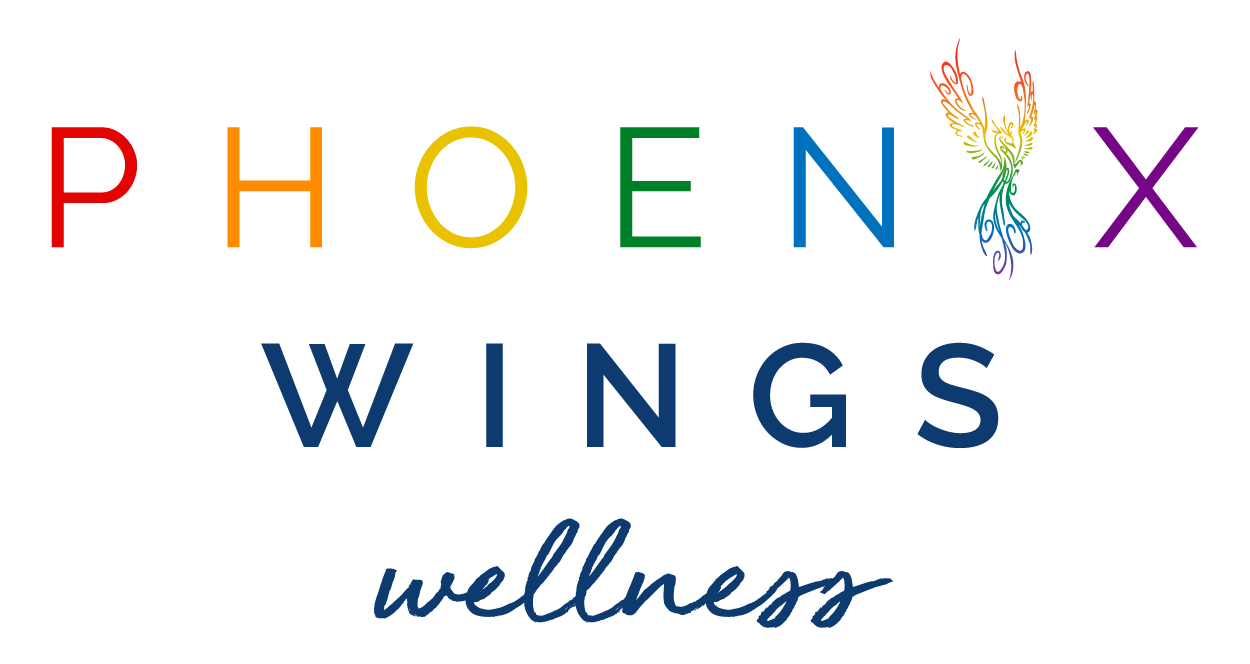Facing Your Fears in October
Facing Your Fears: Why It Matters and How to Begin
October is a month that naturally brings conversations about fear. Haunted houses, spooky costumes, and ghost stories remind us of the thrill of being scared in safe and playful ways. ut in our everyday lives, fear often feels far from fun. For many of us, fear is a very real barrier that can keep us from trying new things, reaching for goals, or even taking small steps toward change.
Fear is part of being human. It protects us when we’re in danger, but it can also stop us from pursuing opportunities, building relationships, or living fully. The good news is that fear isn’t something we have to run from or let control our choices. With the right tools, we can face it, learn from it, and even grow stronger because of it.
At Phoenix Wings Wellness, we know that facing your fears isn’t easy. In fact, joining one of our programs can feel like a scary step all on its own. It can be intimidating to walk into a new group, share your story, or explore parts of yourself you’ve kept hidden. But here’s the truth: you don’t have to do it alone. We create a safe, inclusive space where you can face challenges with compassion and support.
Understanding Fear: What’s Really Happening in Your Brain
Fear begins in the amygdala, a small, almond-shaped structure in the brain’s temporal lobe. Its job is to scan our environment for potential threats and trigger our survival instincts. When it senses danger, it sets off the “fight, flight, or freeze” response: our heart rate spikes, our muscles tense, and our body gets ready to act.
This system is vital when real threats appear — like slamming the brakes to avoid an accident. But our amygdala doesn’t always get it right. It can sound the alarm in situations that aren’t truly dangerous, such as speaking in front of a group, confronting someone, or stepping onto an airplane.
That’s why fear feels so physical. The racing heart, shaky hands, and butterflies in the stomach are simply your body preparing for a danger that isn’t actually there. Understanding this can help us see fear for what it is: a protective response, not necessarily a reflection of reality.
What Does It Mean to Face Your Fears?
Facing your fears isn’t about erasing them or pretending they don’t exist. It’s about acknowledging the fear and choosing not to let it dictate your life.
For example, let’s say you’re terrified of public speaking. Facing this fear doesn’t mean you suddenly love standing in front of a crowd. Instead, it means you take gradual steps such as practicing in front of a mirror, then a small group of friends, then eventually presenting in a larger setting. You still feel nervous, but the fear no longer has the final say in your choices.
Facing fear is a practice. Each time you lean into it, even in small ways, you weaken its grip and build resilience.
7 Mindful Steps to Start Facing Fear
Facing fear isn’t about leaping into the scariest situation right away. It’s about steady, compassionate progress. Here are seven steps to guide you:
Start small. Pick a manageable fear to tackle first. Success here will build confidence for bigger challenges.
Set realistic goals. Break fears into smaller steps. For social anxiety, that might mean starting with saying hello to a stranger before working up to bigger conversations.
Use mindfulness. When fear strikes, ground yourself with deep breathing or a body scan. This helps calm the nervous system and signals safety to the brain.
Challenge negative thoughts. When you think, “I’ll mess this up,” ask, “Is that really true?” Often fear is based on worst-case scenarios, not facts.
Visualise success. Imagine yourself handling the situation well. Visualisation trains the brain to expect positive outcomes.
Lean on support. Share your fears with a friend, family member, or therapist. Talking about them makes them less overwhelming.
Celebrate progress. Every step forward — no matter how small — is a victory. Acknowledge it and be proud.
Fear, Community, and Safe Spaces
One of the biggest fears people carry is the fear of being judged or misunderstood. That’s why walking into a new wellness program can feel intimidating.
At Phoenix Wings Wellness, we know this. We know it takes courage to show up, to say yes to yourself, and to try something new. That’s why we place such a strong focus on creating safe, inclusive, and welcoming environments.
When you enter one of our programs, you don’t need to hide your fears — they are welcome here. You can move at your own pace, and you’ll be supported by facilitators who understand that growth happens gently. Our groups are designed to help you feel less alone, to remind you that you belong, and to encourage you when things feel scary.
Because sometimes, the bravest thing you can do is simply walk through the door.
Final Thoughts: Fear as a Teacher
Fear doesn’t disappear from life and maybe it shouldn’t. It alerts us to danger, pushes us to prepare, and signals when we’re stretching ourselves in meaningful ways.
What matters is how we respond. Do we let fear shrink our lives, or do we acknowledge it, thank it for trying to protect us, and step forward anyway?
Facing fear is rarely easy, but it is always worthwhile. Each time you do, you prove to yourself that you’re stronger than you think. And over time, you’ll discover that fear isn’t just something to survive — it’s something that can teach, stretch, and transform you.
This October, when fear is on everyone’s mind, take a moment to reflect: What fear have you been avoiding? And what small step could you take today to face it?



